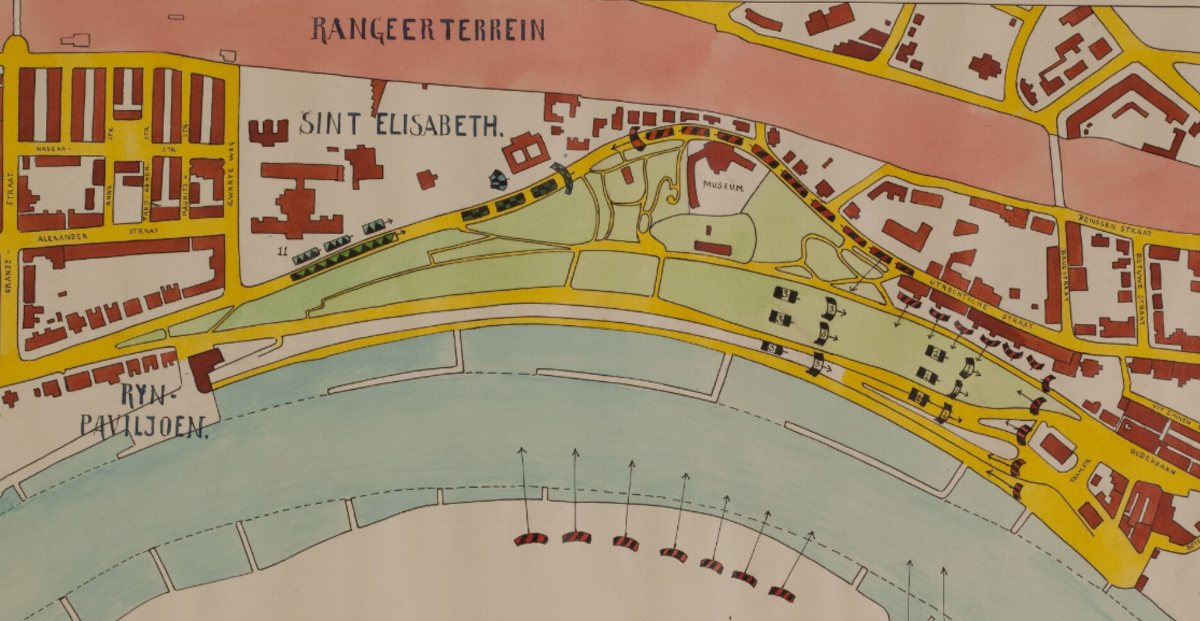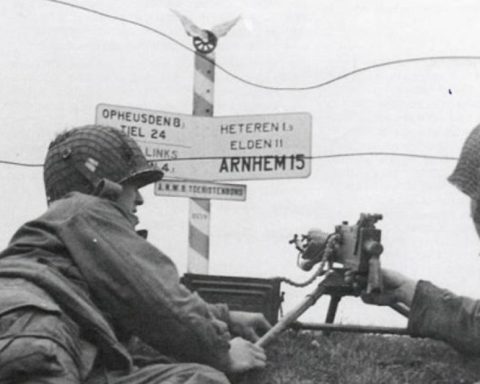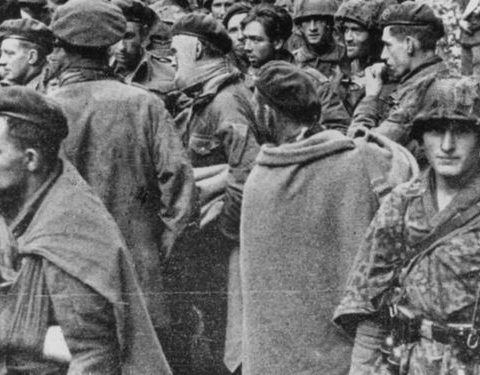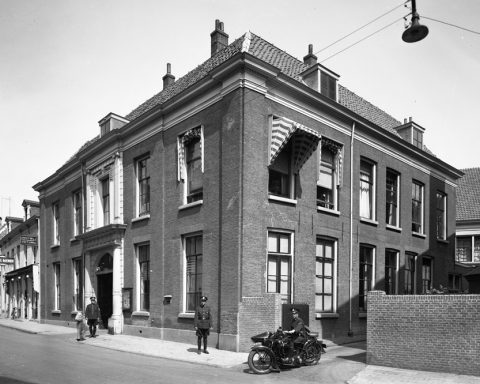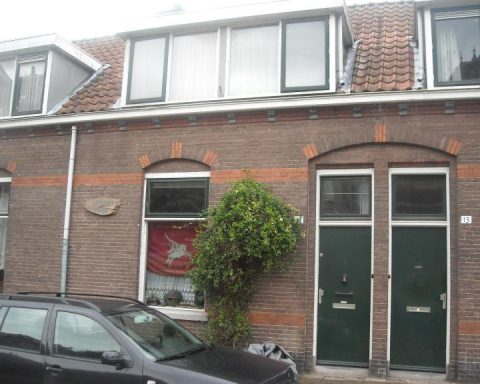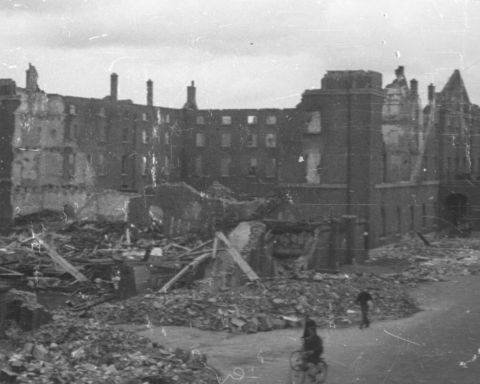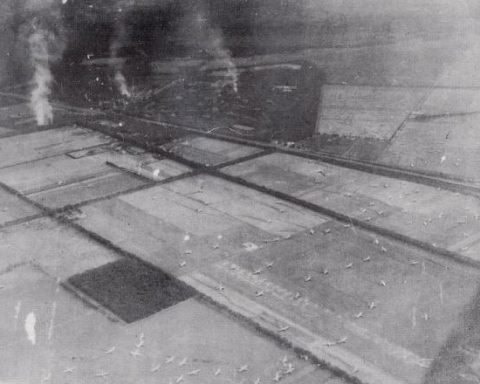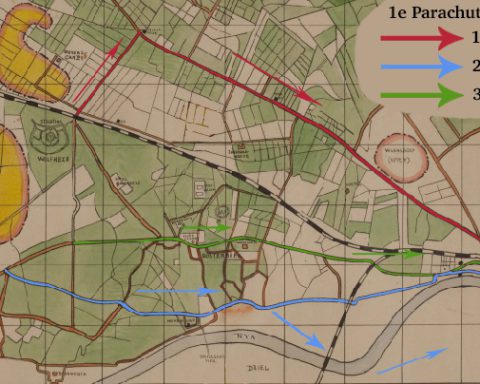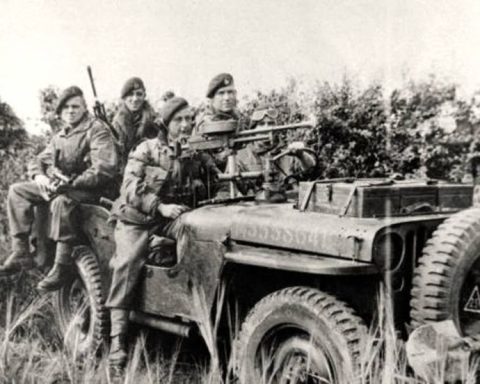In the early morning of Tuesday, September 19, British paratroopers from positions west of the Elisabeth Gasthuis made a last, ultimate attempt to reach John Frost’s troops at the Rhine Bridge. The attack was launched with four battalions, together accounting for almost 2,000 soldiers. It became a massacre.
The 1st Battalion and the 3rd Battalion of the 1st Parachute Brigade were already involved in fighting with the German defense line in the Lombok district, in the west of Arnhem, on Monday 18 September. During the night these two battalions had been reinforced by the South Staffords and the 11th Parachute Battalion, sent in support by General Hicks from division headquarters.
In a house in Lombok, Colonel Dobie of the 1st Battalion held a military council with the commanders of the other battalions. Dobie knew that the Germans could fire on the advancing British troops from three sides if they attacked.
German machine guns and 88 mm artillery on the south bank of the Rhine in Meinerswijk covered the Onderlangs. German SS troops supported with tanks and self-propelled guns were located west of the Gemeentemuseum on Utrechtsestraat. From Heijenoord, on the other side of the railway, German troops with machine guns had a clear field of fire from the north.
Dobie proposed to attack in the dark and fight on until they reached the Rhine Bridge before the sun rose. The Germans had apparently withdrawn to the east of the Elisabeth Gasthuis, which had now changed hands for the fourth time.
That German withdrawal had been a tactical decision by General Harzer of the 9th SS Armored Division. By withdrawing a few hundred meters on the Utrechtseweg past the museum, the Germans had a clear field of fire.
In the early morning of Tuesday, September 19, just after 3 a.m., the British attack started. The 1st Battalion advanced via the Onderlangs, where it encountered the exhausted troops of Colonel Fitch’s 3rd Battalion, who had attempted to break through here the day before. Fitch’s battalion had only about 50 men left.
The South Staffords and the 11th Parachute Battalion advanced via the Utrechtseweg, past the Elisabeth Gasthuis to the Gemeentemuseum. At the museum, at the top of the hill, the British troops came under fire from mechanized cannons that the Germans had placed further down the Utrechtsestraat.
The troops on the Utrechtseweg also had to deal with gunfire coming from the other side of the track, from Heijenoord. In addition, the British were also hit by German anti-aircraft guns fired at their positions from the south of the Rhine.
The British advance quickly became a bloodbath. The British were nowhere near a match for the much stronger German forces opposite them. Historian Antony Beevor, in his book on the Battle of Arnhem, notes the account of a soldier who survived the battle. This paratrooper wrote afterwards:
“I was haunted by recurring scenes from the past nightmare. Of Mervyn with his hanging arm. Of Pete lying unrecognizable on the ground in a grotesque position. Of Angus clinging to the grass in the dark in pain. Of the soldier who screamed in vain for a medic. They were no longer there.
Of the man casually running past an opening. The sharp crack and his look of surprise as he grabbed his neck. Of his convulsive jumps as he was hit by more bullets. I can only hope that the sacrifices we made those days were good for something. But even now I have the feeling that that is not the case.”
In an attempt to escape the devastating German fire, the British retreated to the houses on the Utrechtseweg. The Germans, supported by tanks and mechanical artillery, advanced along the Utrechtseweg from about 9 am. By firing the last PIAT anti-tank grenades, the British initially managed to keep the German tanks at bay. After the anti-tank shells ran out, it was a breeze for the Germans to capture the British positions.
The German mechanized artillery fired cannons and machine gun fire at the houses that the British were occupying. As a result, heavy losses were suffered at the Birtten. The survivors were then forced to surrender. The British who were not hit or captured retreated in a chaotic retreat, some as far as Oosterbeek.
From now on it was the Germans who attacked and the British who had to try with all their might to prevent them from succumbing to German pressure.

